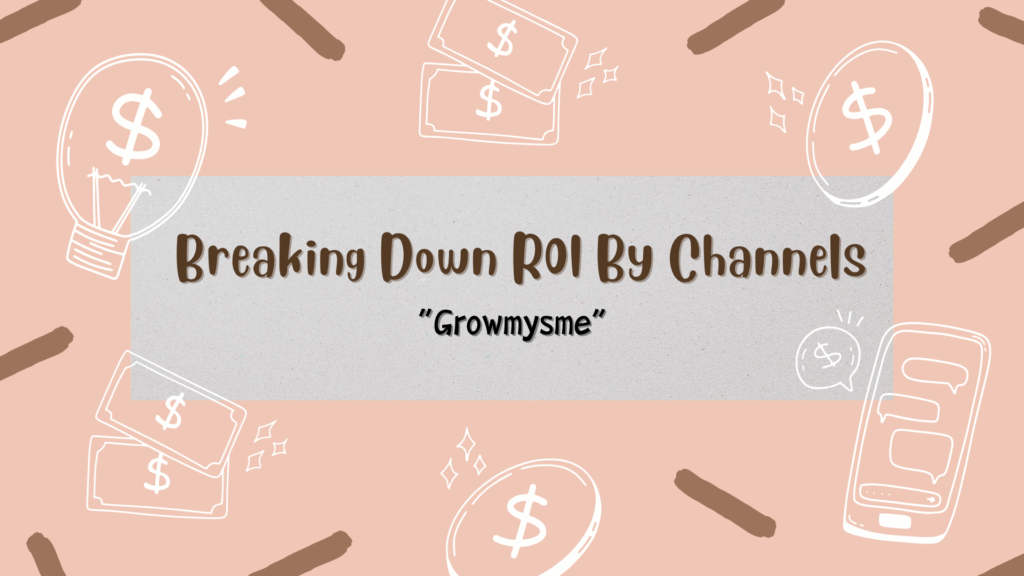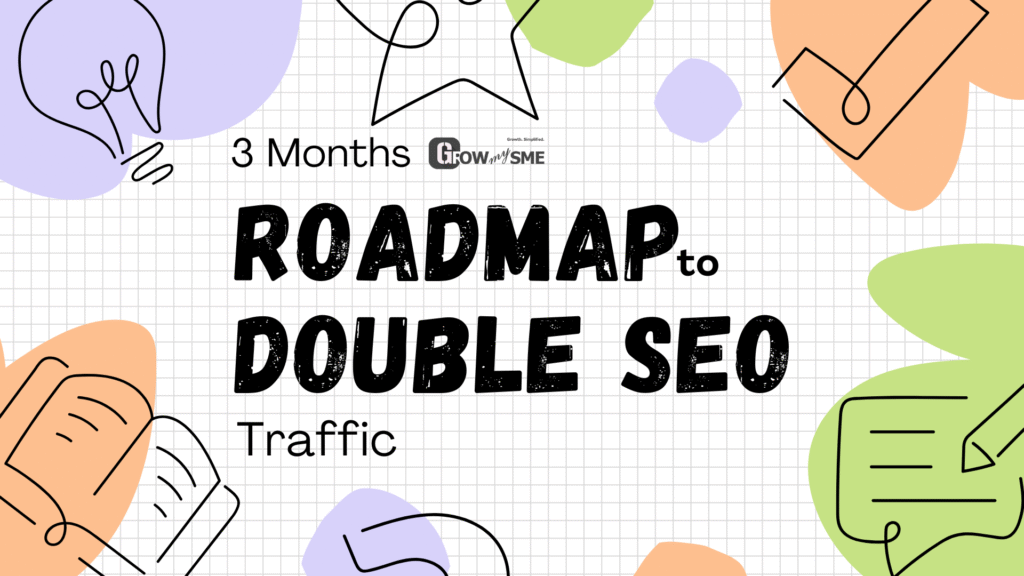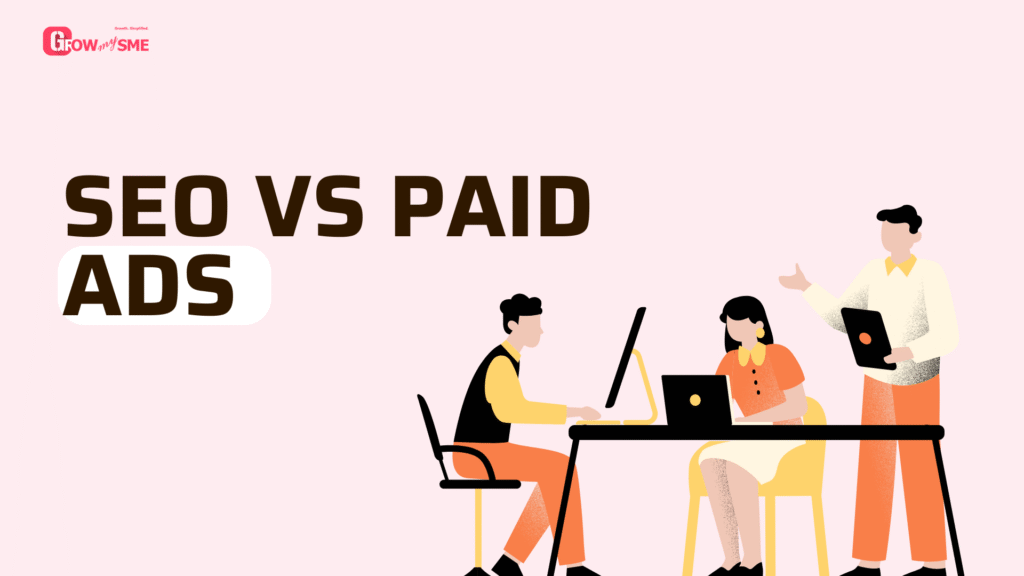Most channel ROI guides are wrong.
They tell you PPC has a 200% ROI and call it a day. They ignore the hidden costs, the long-term value, and the specific context of a service-based business like yours.
This isn’t that guide.
After analyzing campaign data from dozens of SMEs and synthesizing the latest industry reports, we’re breaking down the real ROI of SEO, PPC, Social Media, and Email Marketing.
You’ll get actionable benchmarks, but more importantly, you’ll get a framework to calculate what truly matters: Profit ROI.
Let’s dive in.
Why Your Current ROI Calculations Are Probably Wrong (The Hidden Cost Factor)
Before we look at channels, we must fix the formula. Most people calculate ROI as:
(Revenue – Ad Spend) / Ad Spend = ROI
This is a dangerous oversimplification. For a true picture, you need Profit ROI.
((Number of Customers * Average Lifetime Value) – Total Channel Cost) / Total Channel Cost
Total Channel Cost is the killer. It includes:
- Software Costs: Ahrefs, SEMrush, Ads platform fees, email marketing tools.
- Personnel Costs: Hours spent by you or your team managing campaigns, creating content, analyzing data. (This is the biggest hidden cost for SMEs!)
- Ad Spend: Your actual budget on platforms.
- Agency Fees: If you outsource.
Example: A $1,000 PPC campaign that brings in $3,000 revenue looks like a 200% ROI. But if it took 20 hours of your time at $50/hr ($1,000), your Profit ROI is actually (($3,000 – $1,000 ad spend) – $1,000 labor) / $2,000 total cost = 50%.
This changes everything. Now, let’s apply this to each channel.
The Real ROI Benchmarks for Service-Based SMEs (2025)
Here’s the data you came for, contextualized for service businesses like consulting, marketing agencies, law firms, etc.
1. SEO (Search Engine Optimization)
- Typical Claim: “SEO has a huge ROI because it’s ‘free’ traffic.”
- The Reality: SEO has a high long-term ROI but significant upfront costs and delayed gratification.
Real Benchmarks:
- Average Cost per Lead (CPL): $30 – $100 (depending on service competitiveness)
- Time to ROI: 6-12 months
- Key Insight: SEO isn’t about traffic; it’s about commercial intent. A page ranking for “best coffee in Seattle” gets traffic. A page ranking for “hire seattle coffee shop consultant” gets clients.
The GrowMySME Verdict:
SEO has the highest potential ROI of any channel because, after the initial investment, it compounds. You continue to get leads for years from a single piece of content. The key is targeting bottom-of-funnel keywords first to generate ROI quicker, then building top-of-funnel content.
2. PPC (Pay-Per-Click) / Google Ads
- Typical Claim: “PPC is fast but expensive.”
- The Reality: PPC is fast and measurably expensive. Its value is in testing and intent-capturing.
Real Benchmarks for Service Ads:
- Average Cost per Lead (CPL): $45 – $200+
- Average ROI: 200% – 400% (when calculated correctly using Profit ROI)
- Key Insight: The ROI of PPC is directly tied to your website’s conversion rate. Pouring money into ads with a broken landing page is the #1 SME mistake.
The GrowMySME Verdict:
PPC’s greatest strength is data generation. You can learn which messages, services, and keywords convert in a matter of weeks—intel you can then use to inform your SEO and content strategy. Use it as a testing lab, not just a lead gen channel.
3. Social Media Marketing (Paid & Organic)
- Typical Claim: “Social media has a low ROI for B2B services.”
- The Reality: Organic social builds brand equity (hard to measure), while paid social can drive highly targeted leads.
Real Benchmarks for LinkedIn/FB Ads (Service Targeting):
- Average Cost per Lead (CPL): $60 – $150
- Average ROI: 150% – 300%
- Key Insight: Social media ROI is not about likes. It’s about using hyper-specific targeting (e.g., “Show this ad to Marketing Managers at companies with 50-200 employees in London”) to generate high-value leads.
The GrowMySME Verdict:
Don’t try to be everywhere. Pick one platform where your ideal clients spend their time (e.g., LinkedIn for B2B, Instagram/Pinterest for visually-oriented services) and dominate it. Organic social feeds your retargeting pools for paid campaigns.
4. Email Marketing
- Typical Claim: “Email has an insane ROI of 3600%.”
- The Reality: That viral statistic is misleading. For most SMEs, email is a powerful retention and nurture tool, not a primary acquisition channel.
Real Benchmarks:
- Average Cost per Lead: Minimal (once list is built)
- Average Open Rate (Professional Services): 20-30%
- Average Click-Through Rate (CTR): 2-5%
- Key Insight: The ROI of email is in customer lifetime value (LTV). A newsletter keeps you top-of-mind, leading to repeat business and referrals—which are incredibly high-ROI activities.
The GrowMySME Verdict:
The channel itself has a fantastic ROI because costs are low. The real challenge is building a targeted, permission-based list. Your #1 goal should be to offer a lead magnet (e.g., a checklist, webinar, or guide) that is irresistible to your ideal client.
The Winner’s Framework: How to Calculate & Compare Channel ROI for YOUR Business
Forget the averages. You need your own numbers. Use this framework.
- Track Everything: Implement Google Analytics 4 with conversion tracking. Tag your URLs for every campaign (utm parameters).
- Attribute Value: Assign a dollar value to goals. A lead from a “request a consultation” form might be worth $100. A newsletter signup might be worth $5.
- Calculate Total Channel Cost: Add up all costs for one month: ad spend + software + estimated labor hours.
- Calculate Return: Number of Conversions * Value per Conversion
- Crunch the Profit ROI Number:
(Return – Total Channel Cost) / Total Channel Cost
Example Calculation Table:
| Channel | Total Cost | Conversions | Value/Conversion | Total Return | Profit ROI |
| Google Ads | $2,500 | 20 | $100 | $2,000 | -20% |
| SEO (Blog) | $1,500 | 15 | $100 | $1,500 | 0% |
| LinkedIn Ads | $1,000 | 12 | $100 | $1,200 | 20% |
In this scenario, despite “making money,” the Google Ads campaign is actually losing money when all costs are considered. LinkedIn is the winner this month.
The Final Takedown: It’s Not About the Channel, It’s About the Funnel
The biggest mistake is viewing channels in isolation.
- SEO & Content Marketing are your top-of-funnel engines. They attract strangers and turn them into visitors.
- Social Media builds know-like-trust and nurtures those visitors.
- Email Marketing captures leads and turns them into clients.
- PPC can be injected at any stage to accelerate the process—testing messaging at the top or capturing high-intent buyers at the bottom.
A visitor from SEO might not convert until they’ve been retargeted with a PPC ad and gotten an email from you. How do you attribute that ROI? This is why we focus on Overall Marketing ROI above all else.
Actionable Next Step: Pick one channel. For the next 90 days, track every single cost associated with it. Calculate its true Profit ROI. Then, you’ll have the data to decide: double down or pivot.



